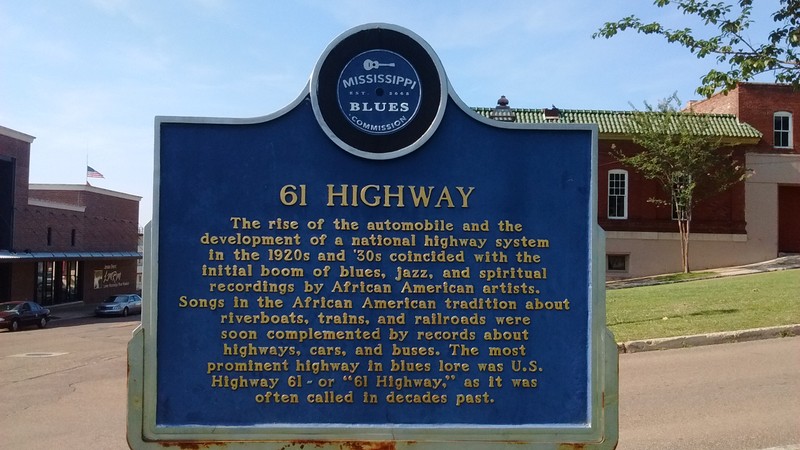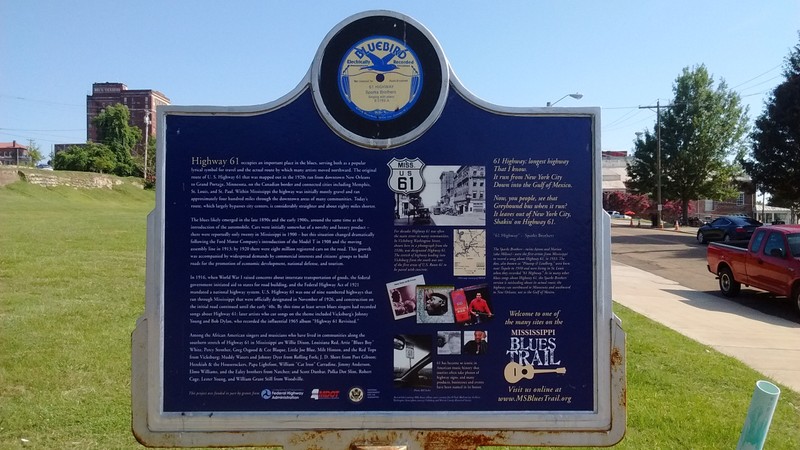61 Highway Mississippi Blues Trail Marker
Introduction
Text-to-speech Audio
Images
This historical marker commemorates the important role Highway 61 has played in the history of blues music.


Backstory and Context
Text-to-speech Audio
Highway 61 was built between the mid-1920s and the early 1940s. It does not entirely follow the original route anymore and is around 80 miles shorter. However, it still connects to major cities including Memphis, St. Louis, and St. Paul.
Perhaps rivaled only by Route 66 in American lore, Highway 61 has become solidified as "the blues highway" due to the vast number of blues musicians who lived near the southern stretch of it, an area which is known as the Mississippi Delta. Among these were Willie Dixon, Louisiana Red, Artie "Blues Boy" White, Percy Strother, Greg Osgood & Cee Blaque, Little Joe Blue, Milt Hinton, Muddy Waters, Johnny Dyer, J. D. Short, Hezekiah & the Houserockers, Papa Lightfoot, William "Cat Iron" Carradine, Jimmy Anderson, Elmo Williams, the Ealey brothers, Scott Dunbar, Polka Dot Slim, Robert Cage, Lester Young, and William Grant Still.
The first artist to write about the highway was Roosevelt Sykes, who recorded the song "Highway 61 Blues" in 1932 when he was living in St Louis. Other artists recorded songs about the highway in the coming years including the Sparks Brothers (they were first from Mississippi to write a song about it), Aaron and Marion (aka Pinetop and Lindberg), who wrote "61 Highway" in 1933. It should be noted that these songs sometimes contained lyrics about the Highway that were not true, such as suggesting that it reached the Gulf of Mexico, rather than New Orleans, and that it passed through Atlanta, Chicago, or New York City. These lyrics were probably not meant to mislead listeners but rather they reflect the feelings of the artists themselves. In the coming years, blues artists continued to write about the highway. In 1965, Bob Dylan recorded the popular album Highway 61 Revisited, which further solidified the highway's legendary status.
Sources
"61 Highway." The Historical Marker Database. Accessed January 26, 2021. https://www.hmdb.org/m.asp?m=97080.
Havers, Richard. "Highway 61 Visited: A Road Trip Through The Birth Of The Blues." Discover Music. October 2, 2018. https://www.udiscovermusic.com/in-depth-features/highway-61-visited-a-road-trip-through-the-birth-of-the-blues.
"Highway 61 Blues." Mississippi Blues Trail. Accessed January 27, 2021. http://www.msbluestrail.org/blues-trail-markers/highway-61-north.
Both images via The Historical Marker Database
